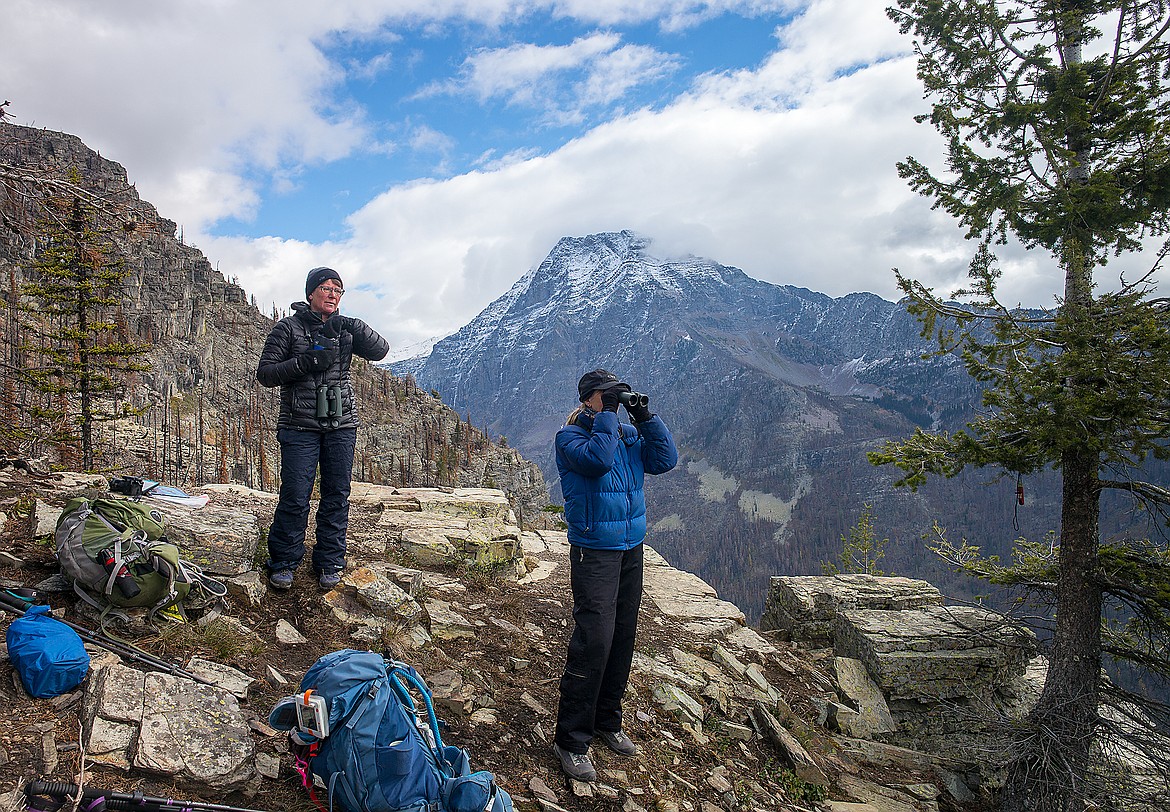An eye on eagles in Glacier Park
Glacier National Park biologist Lisa Bate and volunteer Karen Chickering stand on a crag of rock perched on the flank of Mount Brown. The sun struggles through the clouds. The weatherman said it was supposed to be mostly sunny with a nice breeze, but it’s pretty much all clouds and still.
But then the sun breaks through for a few minutes and the birds show up.
“There’s one,” Chickering yells, lifting her binoculars to her eyes.
A golden eagle floats by, circles around us effortlessly on the breeze and then is gone, heading south for the winter.
Bate enters the data on the bird into an application called Dunkadoo on her iPad. (As an aside, Dunk-a-doo is the call of the American Bittern.)
The hope, Bate said, is to establish the Mount Brown site as an international Hawkwatch International location. Hawkwatch International was founded about 30 years ago by Steve Hoffman in an effort to track raptor migrations across the West. Today, there are 13 Hawkwatch International locations.
While the object of the Hawkwatch program is to document all raptors in their migrations across the park, golden eagles are of particular interest, as the species has shown declines in the West for years now. Mortality comes in a variety of forms — spoaching, habitat and prey changes, and lead poisoning from eating carcasses that have been shot with lead bullets or pellets, just to name a few.
“Other Hawkwatch sites are showing a significant decline in (golden eagles),” Bate noted.
In the mid-1990s biologists documented nearly 2,000 golden eagles migrating past Mount Brown annually.
Glacier also has a resident golden eagle population. In 2018 biologists checked 31 nests in 23 territories. Of these seven were occupied and six were successful. They documented eight chicks fledging, which is a good year for goldens here in Glacier, Bate noted.
Right now the Glacier Park Hawkwatch effort is just getting going and citizen science volunteers are needed, both on the mountainside and at a site on the valley floor near Jammer Joe’s restaurant.
Spotting and identifying the birds is a two-step process. Spotters typically first see the birds with the naked eye and then identify them by using binoculars, a field guide to birds of prey in flight is super handy.
Observers also record data on sex, age, color morph and behavior of raptors, as well as weather and environmental conditions.
Volunteers willing to make the steep hike to the site and spend a couple days there are rewarded with an overnight stay at the Mount Brown Lookout. Volunteers are needed starting in September and running into October. The goal is to have both sites manned everyday, Bate said. The park provides training.
Some days can be very busy. In a six-hour shift earlier this month, they counted 190 birds total, with 130 of them golden eagles.
The observation point is not at the Mount Brown Lookout site itself. It’s about 700 feet below it. Mount Brown is not a hike for everyone. Volunteers willing to go there need to be in a good physical condition — the trail is one of the steepest in the park, with 4,250 of elevation gain in a little more than 5 miles.
“Even though it’s one of the steepest trails in the park,” Bate said. “It’s still accessible.”
Because the trailhead is at Lake McDonald Lodge, the trail is usually open, though in early September this year the Howe Ridge Fire had a it closed for a few days.
People interested in volunteering can contact the park’s Citizen Science office at GLAC_citizen_science@nps.gov or call (406) 888-7986 for more information.
The program is supported by both the Glacier National Park Conservancy and Glacier National Park Volunteer Associates.




